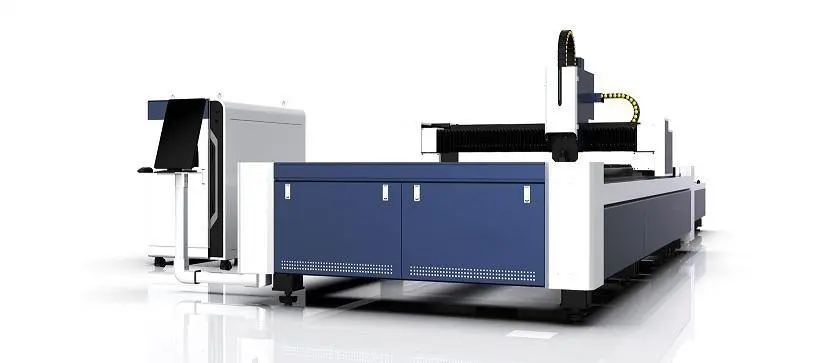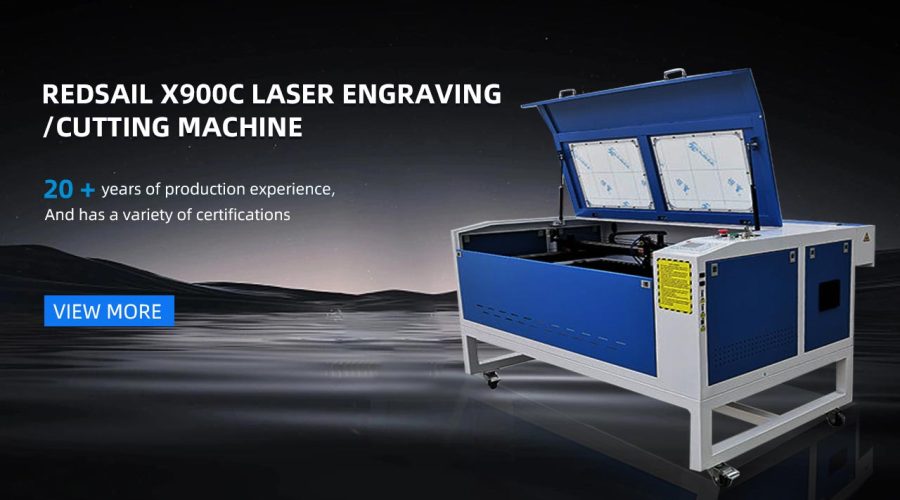For the cutting of textiles, polymer films or some other composite materials, there is an increasing need for more flexible and cost-effective processing technologies. In today’s market trend, it is not difficult to find that mechanical die-cutting, namely CNC die-cutting, is gradually being replaced by laser cutting.
Since laser cutting does not require dies, it has many advantages over traditional die cutting systems. Thereby avoiding the cost of purchasing various molds, or delaying production due to the manufacture of molds. In addition, the mechanical die-cutting system itself has many limitations due to the physical contact it creates between the cutting tool and the material. Another advantage of the tool-free laser cutting system is the flexibility to process thin-sheet materials. The above situation illustrates why laser cutting systems can improve production efficiency.
Compared with metal materials cut by lasers, fabrics have a lower melting point and require less intensity of laser beams, and continuous wave lasers can be used at a power of several hundred watts. However, current research is mainly focused on increasing cutting speed to reduce cycle time.
In addition to shortening the work cycle, laser cutting also has many advantages in improving production efficiency and processing technology. Since laser cutting is a thermal separation process, accelerating the cutting speed reduces the heat build-up near the cut.
Traditional laser cutting machines are gantry processing systems that combine the laser beam, material sheet (or both) with XY axis coordinates. Therefore, when processing small contours, arcs or geometric figures, the speed of laser focusing and the accuracy of the path have a certain influence.
Some manufacturers have adopted some methods to overcome this limitation, such as combining heavy shaft drive with rigid mechanical structure, combining lightweight mechanical structure with fiber reinforced material components or multi-layer cutting technology (2-30 layers of fabric cut at the same time) stand up.
Scientists at the Flownhov Institute for Materials and Beam Technology in Germany pointed out the limitations of the above-mentioned solutions and carried out related research to determine whether the galvanometer technology for laser marking can also be used for laser cutting fabrics.
Laser Cutting Textiles on the Fly
A New Solution: Remote Technology
In order to solve the problem of limited dynamics of the mechanical structure, highly dynamic beam deflection must be used, and the beam can be positioned by means of a movable mirror driven by a motor. Because the mirror is lightweight and can be operated with an optical scanning galvanometer, the positioning beam is maintained precisely even at high cutting speeds. The maximum acceleration can reach 10g. This dynamic characteristic can only be achieved without cutting gas, the residual material from the cutting process must be vaporized.
Long-distance processing is especially the use of continuous wave irradiation lasers, and the laser power can reach several kilowatts. The maximum working stroke can reach 2 meters, and the processing range can reach 1×1 meter. The combination of higher laser power and longer focal length provides a higher beam quality and thus achievable cutting speeds of several meters per second in textile processing.
Efficient airbag production
In order to ensure the safety of passengers, more and more cars are now equipped with various airbags. All kinds of airbags need to be highly flexible and effectively used in system engineering. The cutting of air bag parts is mostly done under laser cutting that requires auxiliary gas. Because of the thermal cutting, processing takes place with a fray-free fiber edge.
In recent years, due to the development of multi-layer cutting technology, the production efficiency of this technology has been greatly improved, and more than 30 layers can be cut at the same time. However, this method is very complicated because a separate layer has to be separated, especially since the layer may have been separated by interlayers. Therefore, the cutting quality of each layer is different, and the number of layers should be appropriately reduced according to the quality requirements.
Because of the shortcomings of multi-layer cutting, scientists began to look for new manufacturing methods such as laser cutting.
Common remote control systems include scanning optics mounted above the material being processed. The movement of the light spot is controlled through the scanning lens. The relationship between processing distance, processing range, and focal length is complex, and the range of materials that can be processed will also affect the final result.
In conclusion
Remote on-the-fly cutting technology makes it possible to process various contours and different widths of material. The technology can be further improved by combining different dynamic and mechanical parameters with the axis system, which gives laser cutting advantages over conventional cutting techniques such as punching or mechanical cutting. This system concept enables the transfer of space-constrained highly dynamic beam reflection technology to wider, flat areas of application such as: flexible film cutting, cutting of leather or paper, welding of heat exchanger plates, cutting of cover fabrics and fillers.





